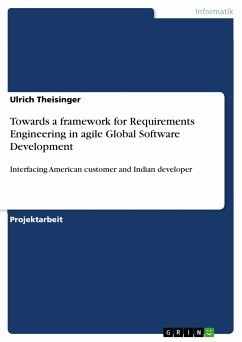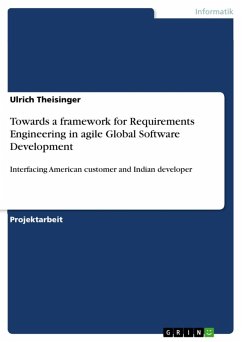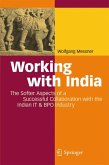Projektarbeit aus dem Jahr 2013 im Fachbereich Informatik - Wirtschaftsinformatik, Note: 1,3, Otto-Friedrich-Universität Bamberg (VAWi), Veranstaltung: Global Information Technology Management, Sprache: Deutsch, Abstract: According to Gartner (Pettey, 2012) the worldwide IT-outsourcing services spending surpassed $251 Billion in 2012. As software is of such great importance for the success of businesses, many organizations began to outsource development or started to create remotely located – so called offshore - software development subsidiaries. Reasons for this trend are according to Herbsleb and Moitra (2001) that businesses seek proximity to the growing markets in order to benefit from the knowledge about customers and local conditions. But there is a high risk of a failure for endeavors of companies that conduct global software development (GSD) – especially when the Global distance (geographical, temporal, linguistic or cultural distance) of customers, vendors or development teams is high. Risks and challenges are multiplied in the GSD context. For example the risk of a communication breakdown or lack of trust that leads to low efficiency because of rework or later delivery of the project. With a market share of almost 53% the United States is the biggest software market (IDC, 2012). India is a huge outsourcing and offshoring destination (DiamondCluster International, 2005). But the cultural gap between America and India is big. Carmel and Abbott (2007) call India “distant lands” due to the difficulties with distance management and cultural differences. Agile methodologies have increased in popularity during the last years (Hillegersberg et al., 2011), (Abrahamsson et al., 2002), (Larsen and Shore, 2012). A growing number of companies also use agile methods in global software development settings (Ramesh et al., 2006). Agile methods rely heavily on communication instead of documentation and therefore seem to contradict with the nature of GSD e.g. dispersed teams, little overlap of working hours for synchronous meetings and lack of informal communication. One, if not the most critical, phase in a software project is the requirements engineering (RE). Based on a literature review this paper analyses barriers impeding typical RE and RM activities in agile GSD settings. The specific RE and RM-related challenges for the context of US customer and Indian developer in an agile software development setting are analyzed and a framework of methods and routines as interventions for overcoming the identified RE- and RM-barriers are proposed.









